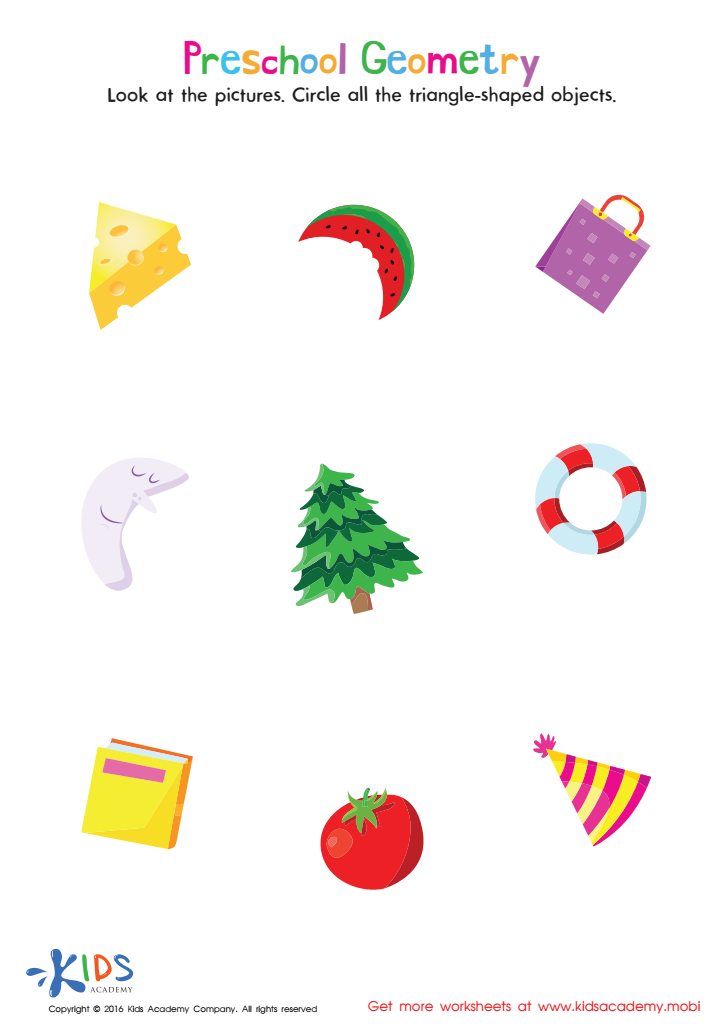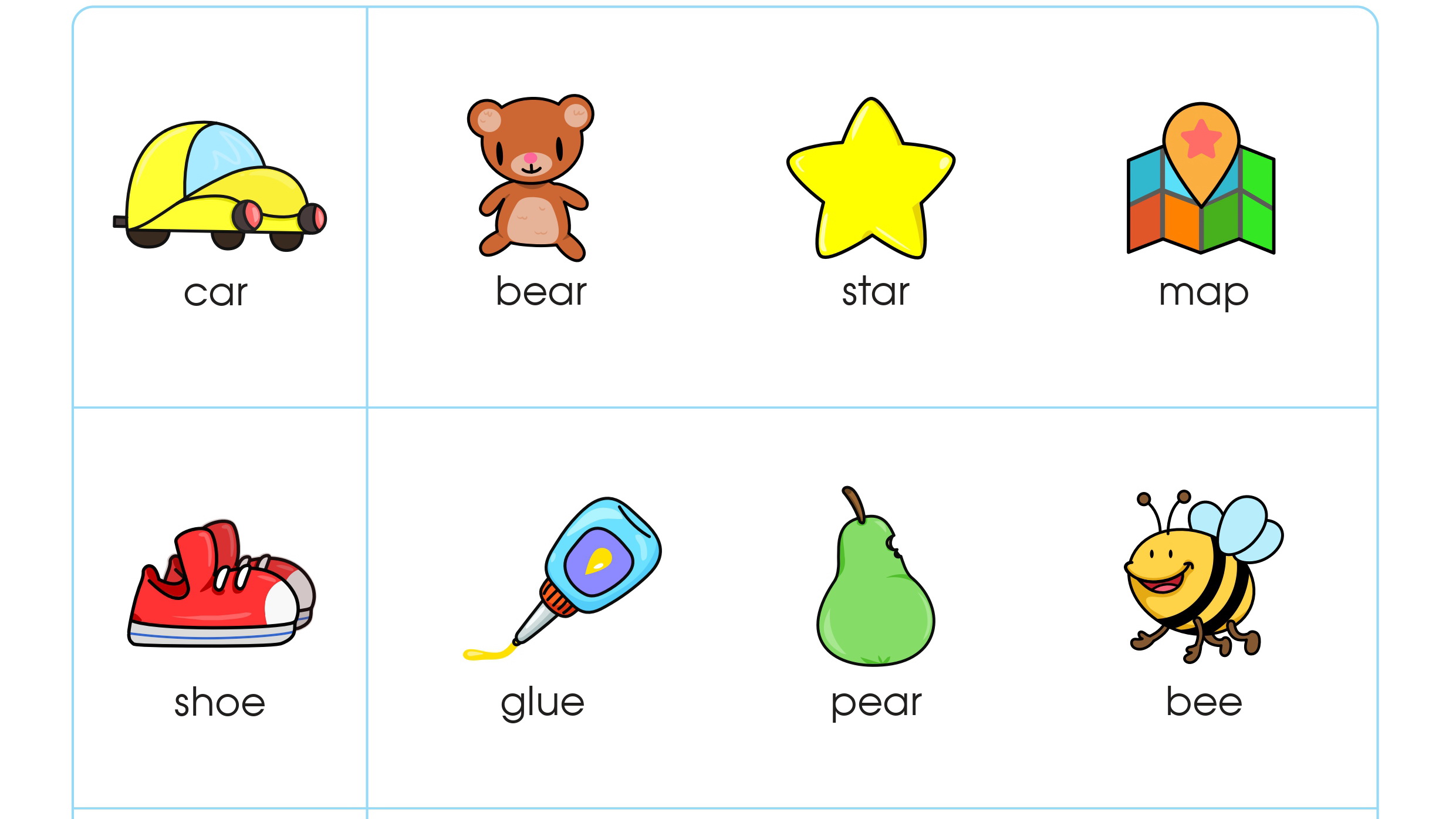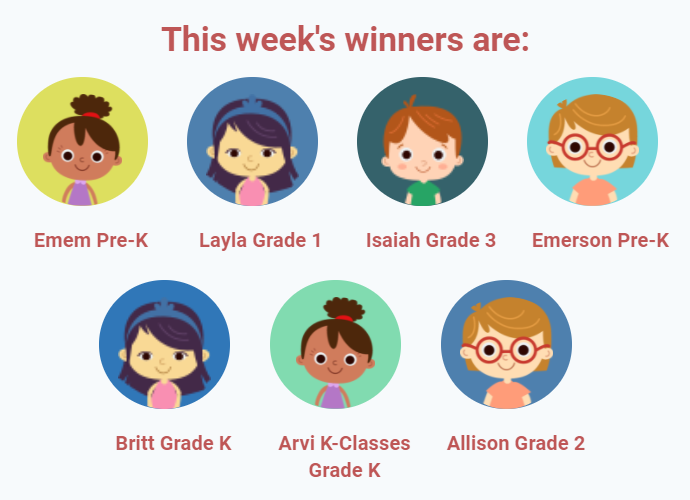Basic geometry understanding Normal Worksheets for Ages 3-8
4 filtered results
-
From - To
Explore our engaging Basic Geometry Understanding Worksheets designed specifically for children ages 3 to 8! These worksheets provide a fun and interactive way for young learners to grasp essential geometric concepts. With colorful visuals and age-appropriate activities, children can identify shapes, understand spatial relationships, and develop critical thinking skills. Each worksheet encourages creativity while reinforcing foundational geometry knowledge, essential for future math success. Perfect for classroom use or at-home learning, our resources are tailored to meet the developmental needs of early learners. Dive into a world of shapes and measurements today, fostering a love for math that will last a lifetime!


Let's Count Faces! Worksheet
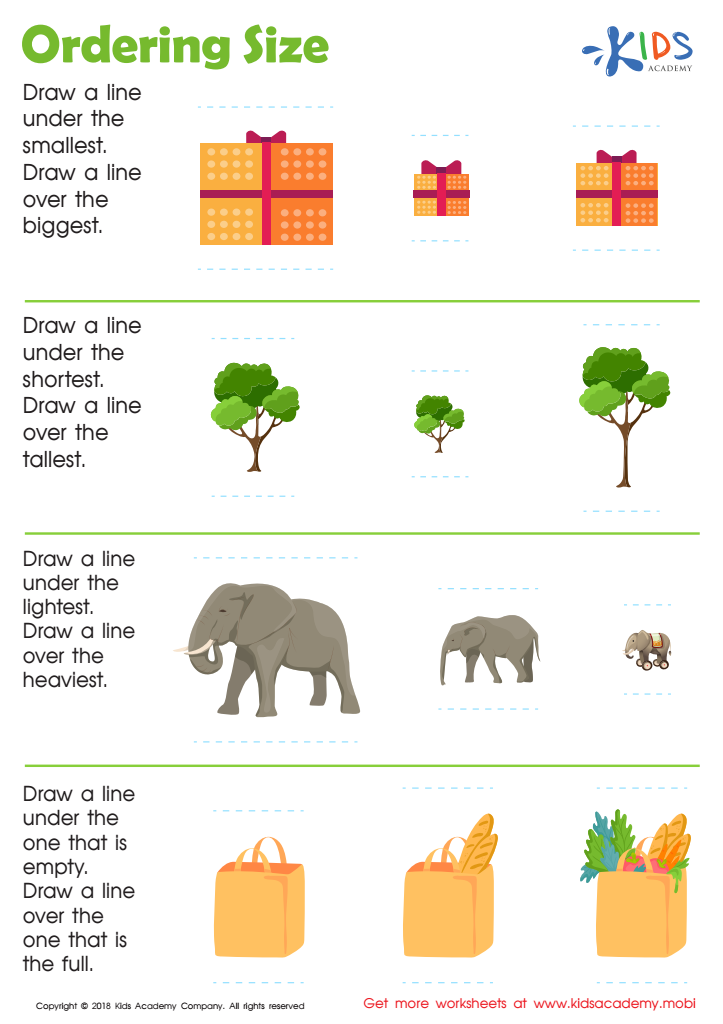

Ordering Size Worksheet
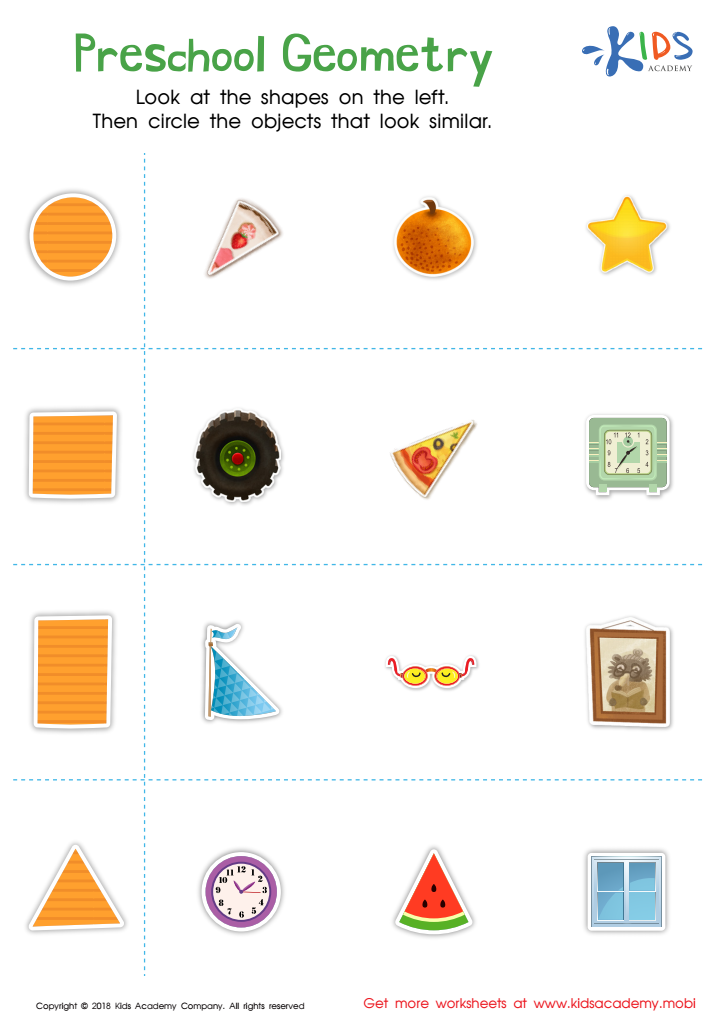

Preschool Geometry Worksheet
Teaching basic geometry to children ages 3-8 lays a crucial foundation for their cognitive and academic development. Understanding geometric concepts helps enhance spatial awareness, problem-solving skills, and critical thinking. During these formative years, children are naturally curious and eager to explore their environments. Introducing geometry concepts, such as shapes, sizes, and spatial relationships, provides them with tools to make sense of the world around them.
Furthermore, a strong grasp of geometry supports important skills in mathematics and other disciplines. For instance, recognizing patterns, comparing lengths, and understanding symmetry are integral not only in math but also in areas such as art and science. By engaging in hands-on activities and interactive learning experiences, children develop a positive attitude toward math, which can influence their future academic pursuits.
Parents and teachers play a pivotal role in fostering a love of geometry through play, storytelling, and daily interactions. Such engagement can significantly enhance children's learning experiences and confidence. Additionally, inclusion of basic geometry in early education aligns with educational standards, ensuring children are better prepared for future academic challenges. By prioritizing basic geometry understanding, parents and teachers can lay a strong groundwork for children’s lifelong learning and problem-solving abilities.
 Assign to My Students
Assign to My Students
